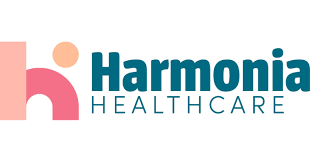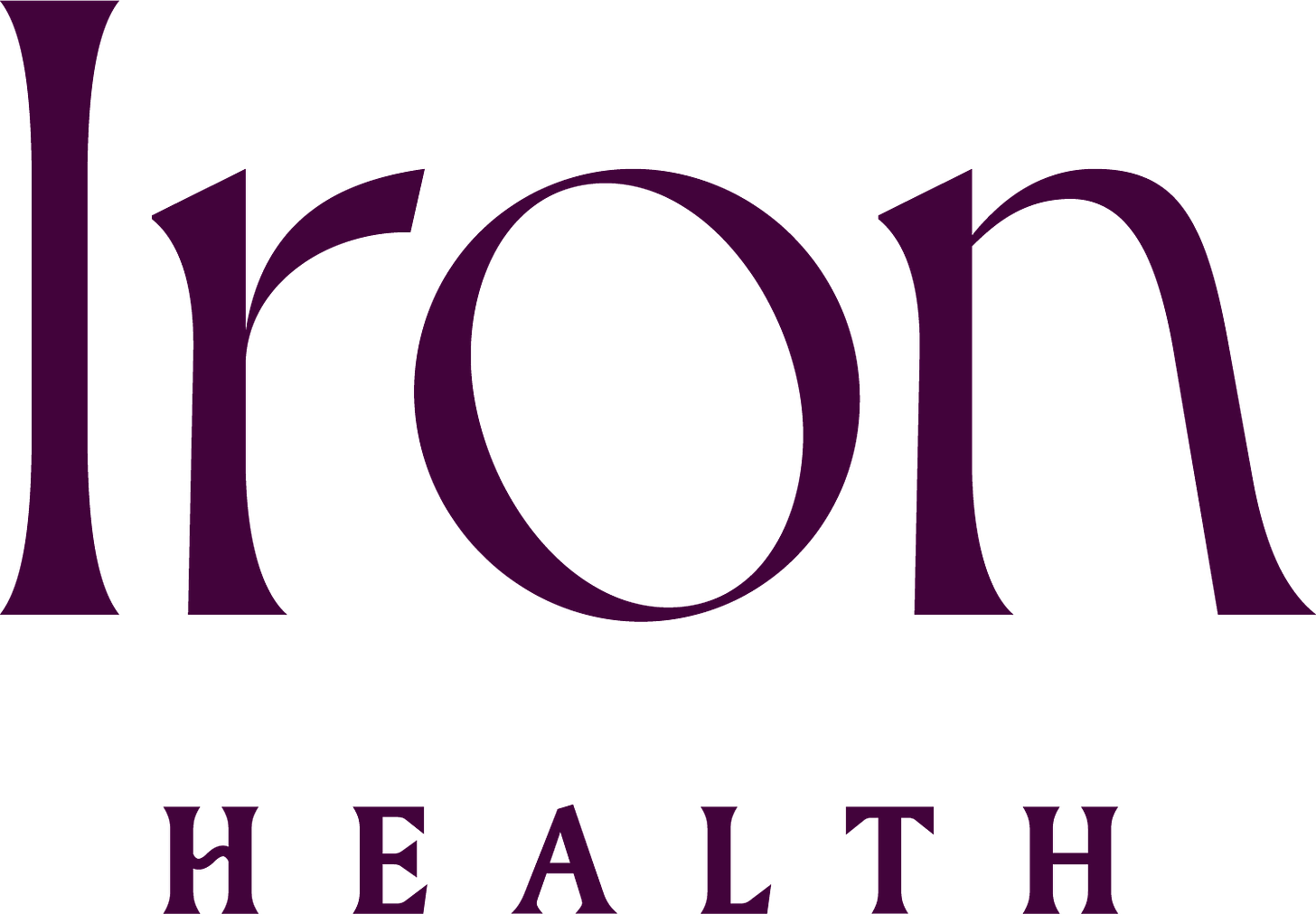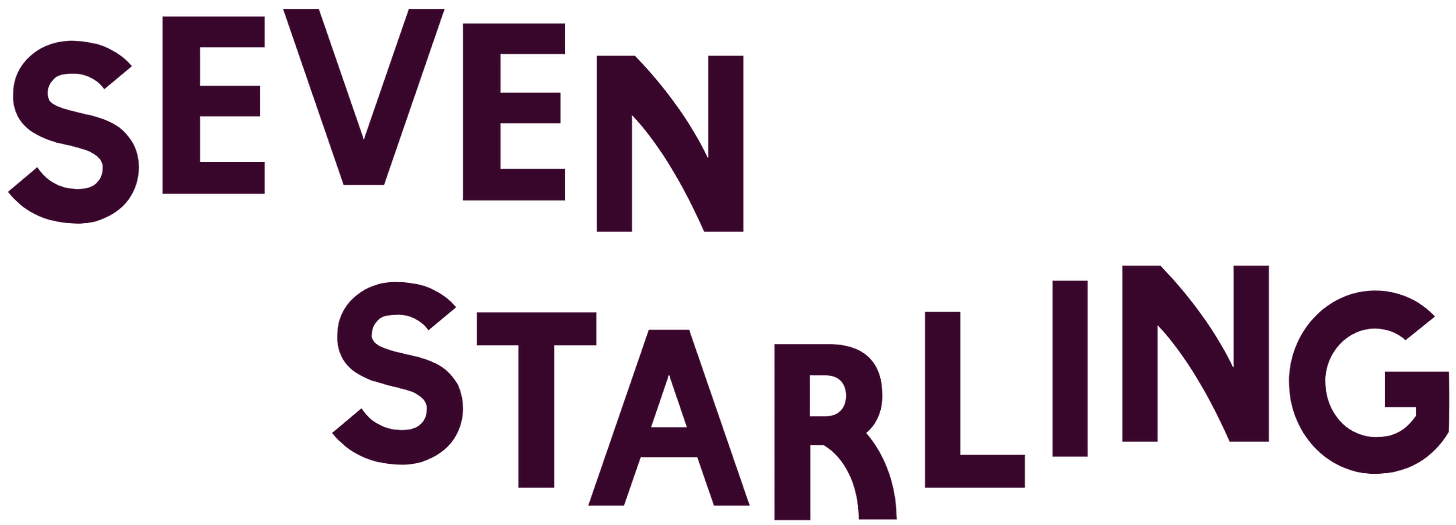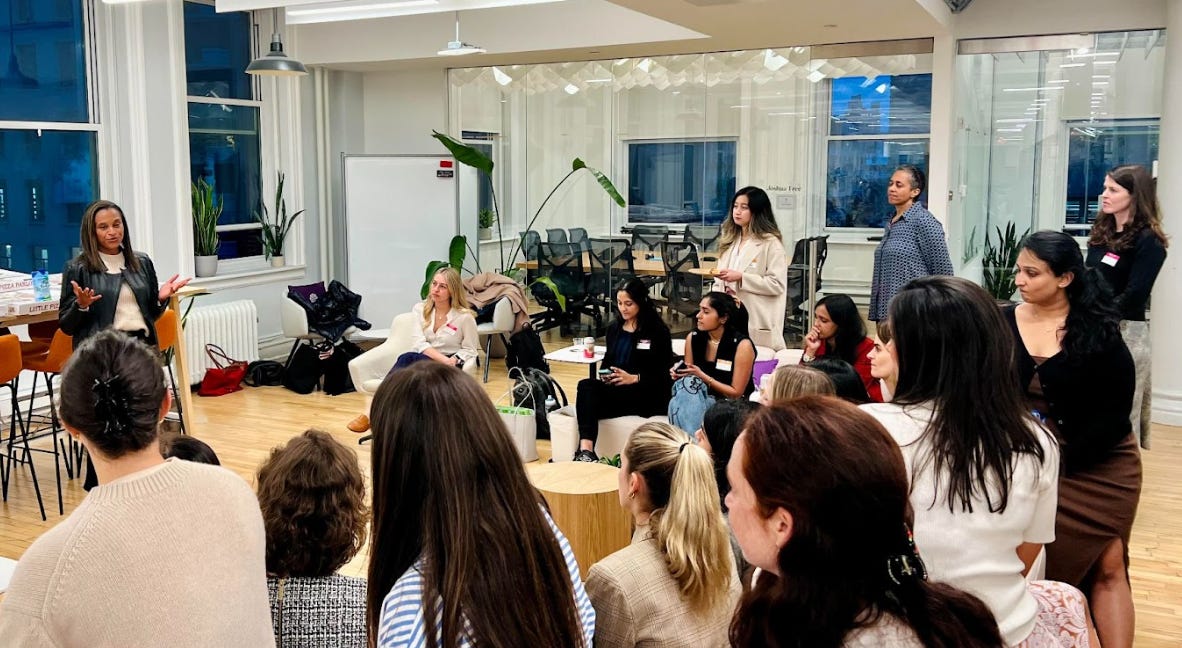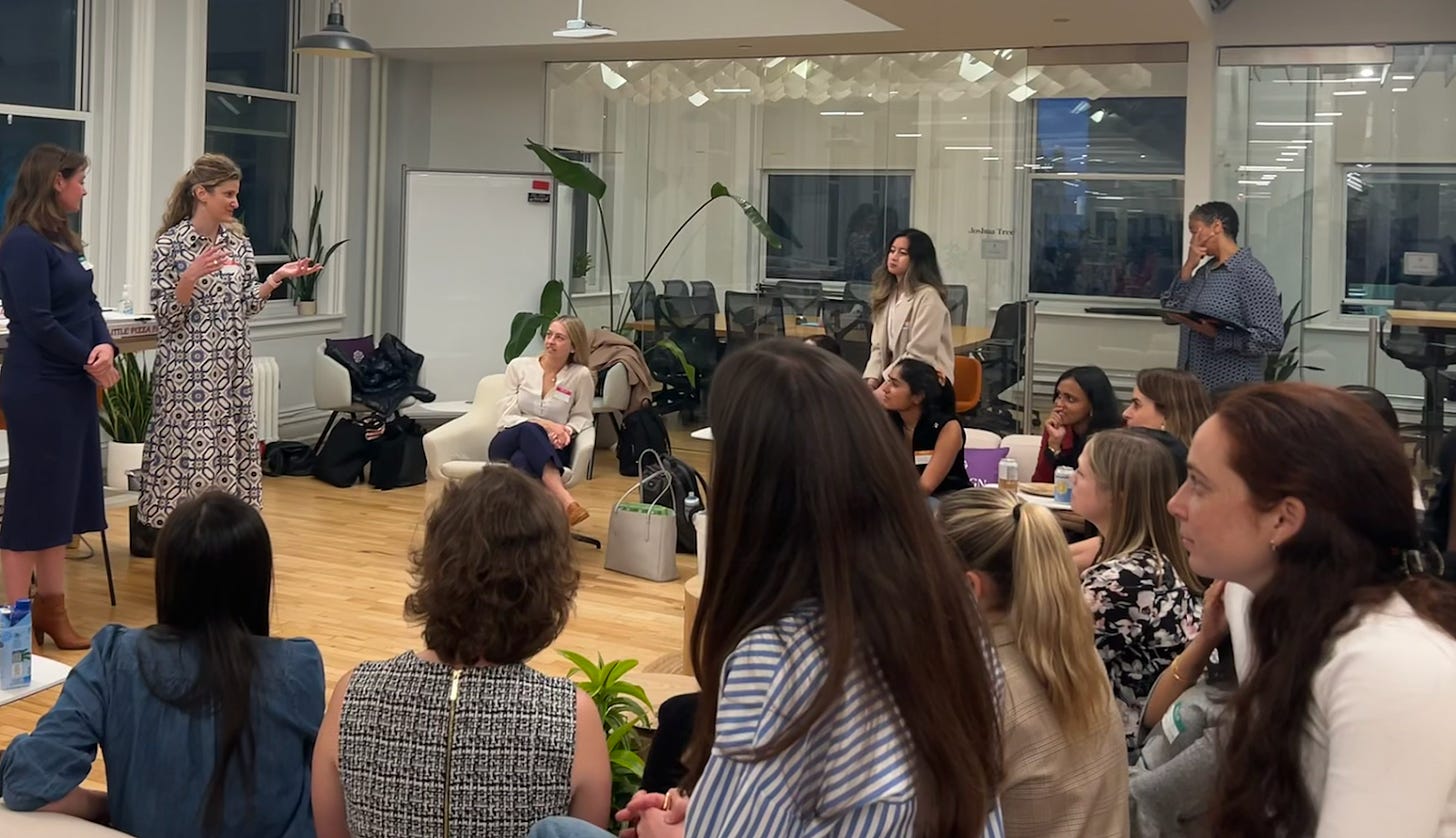Inflection Point: Accelerating Women’s Health Innovation
Key Themes and Tactical Takeaways for Building in Women's Health
Authors:
Chelsea Schlacks, New Ventures, Strategy & Finance Senior Associate at Redesign Health, substack here
Emily Zhen, Principal at Zeal Capital Partners, substack here.
Sarah-Almaza Cox, Co-Founder at Joeyband™ & Women’s Health Consultant, substack here.
Note that this article is written from our own perspectives and experiences and based on publicly available information.
The momentum in women’s health innovation and investments is picking up.
In February, the White House announced $100 million of funding dedicated to women’s health through the ARPA-H program. Over the next year, ARPA-H will invest $100 million to fund life changing research in a “Sprint for Women’s Health.” Private investments in women’s health are also increasing. Venture investments focused on women’s health grew 5% between 2022 and 2023, even in a tough market when overall funding to health tech fell 27%.
We have made progress, but we still have a long way to go. Women’s health has reached an inflection point, yet the unmet need and opportunities in women’s health are still vast. Only 2% of venture funding in healthcare goes to women’s health. And despite every cell having a sex, most treatments and diagnostics still do not account for sex-based differences. Women were not even required to be included in federal research studies until the NIH Revitalization Act of 1993. The result is gender biases in medical research and in care delivery.
We believe bringing together innovators is key to closing gaps in women’s health.
On April 17th, we (Chelsea, Emily, and Sarah) convened 30+ founders, investors, and operators for a women’s health-themed dinner in New York City, featuring “lighting talks” and breakout sessions. The purpose of this dinner was to foster interdisciplinary discussion and collaboration among leading innovators in women’s health.
Women’s Health Dinner, April 2024, hosted by Redesign Health Office in NYC.
Our co-author Emily also attended the NYSE (New York Stock Exchange) Women’s Health Summit, featuring First Lady Jill Biden.
First Lady, Jill Biden, at NYSE 2024 Women’s Health Summit
In the spirit of democratizing access to information, we wanted to share a few key themes and tactical takeaways from the experiences of women’s health leaders, innovators, and investors: :
Key Themes
Addressing the Education and Awareness Gap:
Addressing the gaps in women’s health starts with addressing gaps in education and awareness, especially among consumers and providers.
A few stats that surprised us: 1 in 3 women experience some type of pelvic floor disorder, but many aren’t aware of pelvic floor physical therapy and treatment options. 1 in 10 women of reproductive age have endometriosis. Studies have shown that many women under 40 are not educated about menopause, and neither are their health professionals.
It’s about educating the patient and the provider. Online communities and social media have started educating consumers. However, the challenge with social media is ensuring the information disseminated is accurate and evidence-based. Platforms like Rosy Wellness promote women’s health literacy for consumers and providers, with over 250,000 women reached. Rosy recently launched an app called “Quickies” where medical professionals will post quick videos on various women’s health topics to raise awareness.
Other startups publish educational content relevant to the population they serve: Origin Therapy is raising awareness about pelvic floor therapy, Midi Health is smashing the menopause taboo, and Aavia is helping women understand their hormone cycles.
Reaching the providers, especially OBGYNs is key. The OBGYN is viewed as the quarterback of women’s healthcare and the go-to resource for women. Ensuring that the latest cutting-edge research and innovation is shared with providers is crucial to gaining clinical adoption.
Researching Sex-Based Differences to Inform Treatments and Diagnostics:
Women’s health goes beyond reproductive health.There are many diseases that disproportionately or uniquely impact women differently from men. 80% of people with autoimmune conditions and ⅔ of people living with dementia are women. Yet the reasons underlying why are likely sex-based. Females have two X chromosomes and males have one X and one Y chromosome. For a long time, many thought the second X chromosome that females had was silent. But recent research on conditions that impact women disproportionately or differently are shedding light that this may not be the case.
During the NYSE Women’s Health Summit, Dr. Jessica Federer put it well: “Data exclusion is violence.” Women were not required to be included in federal research and clinical trials until 1993 through the NIH Revitalization Act. While we have made strides in research, there is still a lot unknown. Most studies today do not look at sex-based differences.
What we do know is that sex-based differences do exist - and not understanding them could be life-threatening. The symptoms of a heart attack look different in women - oftentimes, it doesn’t feel like excruciating chest pain. Though heart disease is the No. 1 killer of women in the United States, women often chalk up the symptoms to less life-threatening conditions such as acid reflux, the flu or normal aging, according to the American Heart Association.
Harmonia Healthcare, dedicated to closing the gap in women’s health research, is tackling a pronounced yet overlooked problem: hyperemesis gravidarum (HG). Harmonia’s clinic in NJ treats extreme nausea and vomiting during pregnancy - which frequently goes undiagnosed until women end up in the ER.
“Harmonia’s raison d'être is to drive better health outcomes for women by focusing on historically underserved and underdiagnosed diseases in women’s health. The foundation of our approach consists of providing access to education, advocating on behalf of patients, providing clinically validated treatments, and conducting innovative research.” - Leslie Gautam, President, Harmonia Healthcare
To truly address women’s health, we need to research sex-based differences and then incorporate this evidence-based treatment into clinical practice.
Increasing Funding to Women’s Health Startups:
On the bright side, women’s health investment is finally picking up. A Silicon Valley Bank report recently found that venture capital investment in women’s health has increased 314% over the last five years, outpacing the 28% rise in healthcare overall. Yet early-stage valuations for companies focused on women’s health still trailed valuations for overall healthcare investment and women’s health investment still only accounts for 2% of overall venture funding. Several venture capital firms focused on women’s health are helping lead the charge to increase investment, such as SteelSky Ventures, Avestria Ventures, RH Capital, Amboy Street Ventures, and Portfolia Femtech Fund.
We are making progress, but need to keep up the momentum. For people building in women’s health, here are some of the salient, tactical takeaways from our dinner:
Tactical Takeaways
GTM Strategy
Provider Partnerships: Partnering with providers is a key step for women’s health startups, as many women view the OBGYN as the quarterback of their care.
Align with Provider Goals: Understand the goals and pain points of the providers and align your solution to address these issues. This could include improving patient adherence, streamlining workflows, or offering new revenue streams.
Start Small: Begin with pilot programs to demonstrate the efficacy of your solution in a real-world setting. This allows you to collect data, refine your offering, and build credibility.
Engage Decision-Makers: Ensure you have buy-in from key decision-makers within the provider organization. This includes not just clinical staff but also administrative and IT departments.
“For an effective provider GTM, it is not enough to communicate your value for patients. Center your business model around your value to the provider. Only strong provider value propositions survive in today's healthcare ecosystem. Demonstrating a rich understanding of their buying drivers is your first opportunity to build credibility.” - Stephanie Winans, Co-founder and CEO at Iron Health
“Fit their workflow into yours, not the other way around: these providers and their staff are swamped, so whatever you bring them has to be incredibly easy for them to integrate and actually should save them time, not add to it.” - Jessica Bell van der Waal, Co-founder and CEO of Frame
"Securing a partnership with a clinic is just the starting point -- ongoing engagement long after the partnership is established is key to a sustainable provider partnership model. In addition to tracking clinic activation, we closely monitor growth in engagement over time. We think a lot about how we can show the value that we deliver to the clinic through ongoing patient reporting and focused touchpoints."- Tina Keshani, Co-founder and CEO of Seven Starling
Contracting with payers: Startups must be rigorous in demonstrating the value and efficacy of their services and aligning with payors' goals for quality and cost-effective care. Education and building evidenced-based awareness with all stakeholders (consumer, provider, payor) early on is essential to gaining trust in the market.
Understanding that contracting with a payor may take 12-18 months, startups need to find creative ways to collect data on clinical outcomes and ROI ahead of selling. Pilot programs with smaller payors or specific health plans are likely easier to gain an initial foothold in, but CEOs should be aware that these pilots may be loss leaders. With the model proven out at smaller plans, it is easier to start scaling up to larger contracts.
Startups should develop comprehensive care plans that address the specific needs of women's health, such as preventive care, chronic disease management, and reproductive health services, to highlight their specialized expertise. Building relationships with key stakeholders within payor organizations, including medical directors and contract managers, can facilitate negotiations and help tailor contracts that meet both parties' needs.
Reimbursement is still a key challenge, especially outside of maternal health. Collecting data on clinical outcomes and ROI, especially within the year, is crucial as women’s health companies look to engage payers. Provider buy-in can help accelerate reimbursement.
Finally, staying informed about policy changes and advocating for fair reimbursement rates for women's health services is crucial to ensuring financial sustainability and expanding access to care.
“Our ability to advance our mission in the market relies heavily on the ability of our customers to see the business value that mission drives. Think early about the inputs you'll need to tell that value story, and go deep on engagement and impact measurement to back it up.” - Maya Hardigan, Founder and CEO of Mae
Maya Hardigan, Mae, Founder and CEO, providing a lightning round talk.
Devices, Regulatory and Pharmaceuticals
When it comes to launching products within the healthcare space, one of the most (early on) important strategic decisions a company will make is around their FDA registration; example questions such as 1) does our product need to be classified as a device? 2) what classification would our product fall under (class I, class II, class III)? 3) do we pursue a ‘De Novo’ request? These early on questions around device classification and registration will set the course for how and when your organization takes its next steps towards becoming commercially ready. Not only is data collection a critical next step, but also the method of data collection, type of data collected and the environment in which it’s collected all come into effect at this stage. This is typically when applying for grants and initiating/completing a pre-seed, or seed round, is considered. In unique cases, this stage may be able to be boot-strapped as well. The data collection, depending on the product, may take a year or several years.There is no cookie cutter way to pursue device classification and medical device companies like The Joeyband™ , Armour Medical and Raydiant Oximetry have all approached this path quite differently.
The FDA currently oversees over 6,000 different types of medical devices, so it is important to seek professional guidance at this stage, from experts, as this is the “foundation of your house” and will determine your success in the market (from selling the device, to channel partnerships, to acquisitions).
It’s worth noting that becoming an FDA registered device doesn’t ensure reimbursement - this is a separate undertaking altogether which requires additional due diligence to understand whether your device can fit, for example, under an existing HCPCS or CPT code. Please see here to read more about codes. Perhaps your device does have an existing code that supports it, in which case you’ll need to have that officially verified (e.g. PDAC verification, if your device could fall within the DME world). Or, perhaps, a unique code needs to be pursued which is worth noting that although this is a very rewarding path when completed successfully, it is also a much longer and expensive path.
Positively, we are seeing more innovation in women’s health devices in the US than ever before. Not only are new solutions being developed and commercialized, but global corporations, feeling the momentum, are shaking up the way they approach the market. For example, Laborie, traditionally a global company focused on Urology, has built out a leading women’s health device line over the last five years or so, focusing on Obstetrics, Gynaecology and Neonatal, with their most recent acquisition of the LifeBubble™ in 2023. Companies in the pharmaceutical industry are also expanding their offerings outside of traditional pharma - Organon, which is focused solely on women’s health and a spinoff of Merck in 2021, acquired postpartum hemorrhage device Jada, while Ferring, back in 2022, announced a strategic tech investment and partnership in Robyn, which complimented Fertility Out Loud, a platform and social community that Ferring launched in 2021 to help improve access to care for all aspiring parents. Pharma giants, Pfizer and Roche, have both partnered with sexual wellness app Rosy focusing on HPV screening and cervical cancer (Roche), as well as Menopause and Migraine (Pfizer). It appears as though companies like Bayer and Pharmavite (owned by Otsuka Pharma) are staying a bit closer to home by expanding products within their core offering, and it’s an exciting time with the invention of a non-hormonal menopause drug, elinzanetant, and the acquisition of Bonafide in 2023, respectively.
Continuing on the pharma vein, there was groundbreaking regulatory work, in 2023, when the first “over the counter” birth control pill, Opill, was approved by the FDA, marking a historic switch from Rx to OTC. This is just one industry example highlighting a company that is driving accessibility and empowering the patient/consumer. Another branch of women’s health where we see patient empowerment emerging quickly, and could complement the pharma space, are vaginal microbiome companies like Daye, who are not only revolutionizing tampon production and at home-testing for women, but are also turning the ubiquitous tampon into a medical device.
Women’s health devices tend to fall into the following buckets: Reproductive health (pre-pregnancy, menopause, endometriosis, microbiome, etc.), Pregnancy & Nursing, General Healthcare (cancer, heart health, mental health etc.), PharmTech, Longevity and Beauty. It’s impossible to cover the extensiveness of the devices in this article, however, based on all our conversations with emerging device companies in women’s health, it goes without saying that we can’t wait to see what the future looks like.
Susan Hanna, Organon, Director of Strategic Initiatives & Transition Management, providing a lightning round talk.
Sarah-Almaza Cox (right) & Hayley Mullins (left), Joeyband™ Co-Founders, providing a lightning round talk.
Fundraising
For founders of women's health companies seeking to fundraise, it is crucial to leverage the current positive market sentiment and highlight the unmet needs within this sector.
Emphasize the unique value propositions and potential for significant social impact to attract both traditional healthcare investors and those focused on gender equity.
Consider strategic partnerships with organizations dedicated to advancing women's health to enhance credibility and investment appeal. There has been a rise in government grants and non-dilutive funding for women’s health business in particular (Office of Research on Women’s Health (ORWH) Grants, MLSC’s Women’s Health Initiative).
Manage cash burn extremely tightly. Fundraising can take much longer than expected (sometimes 6 months+) as investors often want to see the evolution of the business over time.
Clearly articulate the business proposition, product mechanics, and GTM strategy. Investors are ultimately looking for ROI and need to be convinced of the business model’s legitimacy. Traction and unit economics have to be strong - meaning multiple contracts and significant realized revenue.
If you’re already a revenue generating company, look at companies who are innovating within the VC space, such as Coralus. You may be eligible to apply to their cohort.
Founders should also prepare for a competitive funding environment by demonstrating robust financial models and clear pathways to scalability (and profitability), capitalizing on the increased awareness and interest in women's health innovation.
Supporting Women’s Health
We, the authors of this article, wanted to leave our readers with a few specific calls to action. Women’s health is all about collaboration and as such, we encourage the following:
Connect, support and uplift each other; we all win when women’s health continues to be prioritized, invested in, and driven into the healthcare market.
There are incredible non-profit organizations doing work in this space; from the Society for Women’s Health Research to the Endometriosis Foundation of America, March for Moms, Planned Parenthood, Women’s Health Access Matters (WHAM), Black Mamas Matter, Mama Glow Foundation, Birth Fund and more. Please head over to their pages to donate.
Be active in your community! Advocate for policy changes and public investment in women’s health, participate in research and clinical trials, and promote (& engage in) preventative practices such as regular screenings and healthy lifestyle choices
Building or investing in women’s health? We would love to hear from you! Please feel free to reach out to any of us (Chelsea, Emily, or Sarah).









